Rip van Solar
07/17/2021. It has been five years and a day since I posted to "Staring at the Sun." Before a pandemic. Before that lunatic. Before the total eclipse. Before so much. No wonder there's new software for everything: ASIStudio for capture, Autostakkert! v3 for stacking, Topaz AI and newer PixInsight versions for post. The hexacore i7 on my desk still feels fast. The telescope control / acquisition computer is an i5-based Toughbook with 32GB of RAM and a half terabyte SSD. I know it will all seem antiquated soon enough. I have a place in New Mexico! On wheels, and I'm having trouble getting out to it very often, but... priorities. And Covid.
Last week, I duisted off some solar gear and went imaging between the raindrops. The air was hazy but dry long enough to collect a few gigabytes to play with. Emil Kraaikamp's AutoStakkert! v3.1.4 is NOT a straightforward piece of software, but on YouTube I found a video by Craig Towell showing how he uses it to process lunar images. I followed along. This is going to take some practice, but it absolutely, 100% works, and I ought to have it down by the time the current solar cycle ramps up. [Oh for heaven's sake: four or five clips was enough practice to get comfortable and start pushing more buttons.]
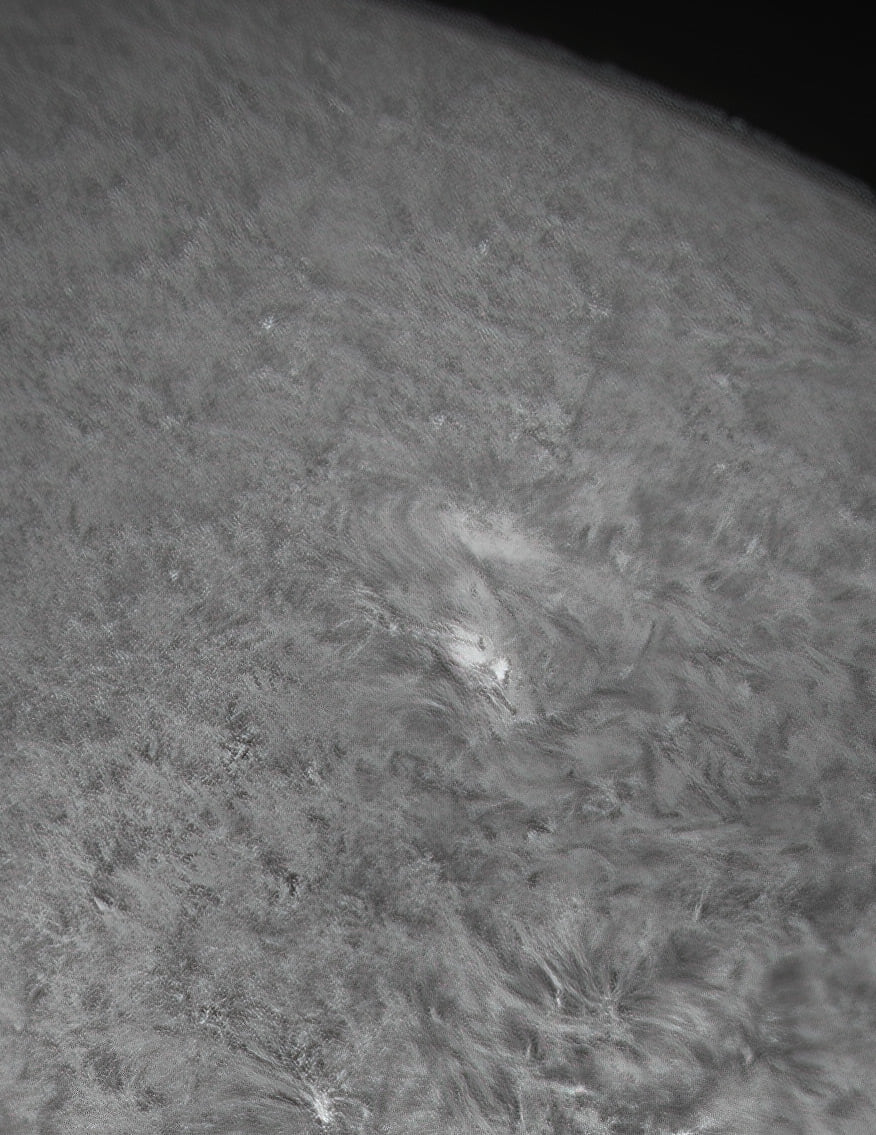
Best 50 frames of a short, 100-frame clip of an active region on the Sun.
The solar kit lives!
Yesterday, I decided to try the ASI120Mini instead of the older ASI120. I thought it might be faster and maybe quieter and all around better, but I see no real advantage to it, at least with the connections available today. In addition, the Newton's rings issue I solved in another age of the Earth for the old camera would have to be re-solved with it. While I had everything apart, I cleaned every optical surface in the old camera (chip, cover, and Barlow). I discovered that I had glued the Barlow in place. WTF? While putting it all back together, I went looking for glue. Do not fix what is not broken. Last week, I replaced the slightly frosted energy rejection filter in the Lunt diagonal with a generic alternative; it works, but I've seen no improvement yet. I just want the kit to be ready when the Sun wakes up -- any day now.
Since the G11 is in Rodeo and the Mach1 is overkill, I'm using a truly ancient LXD-55 as my solar mount (it's also my widefield mount when the little iOptron tracker --original version-- can't handle the glass). I'm powering the mount with a a recently built 33AH battery pack (connections are a marine power panel and some messy solder). No, it is not a lithium battery, but that day is coming. The Toughbook makes no pretense of being light, and it isn't, but it IS tough and it has big enough batteries (plural) to run for hours on its own. It's the only notebook I've ever seen with enough screen oomph to be easily legible in full daylight.
The new camera showcasing Newton's Rings:
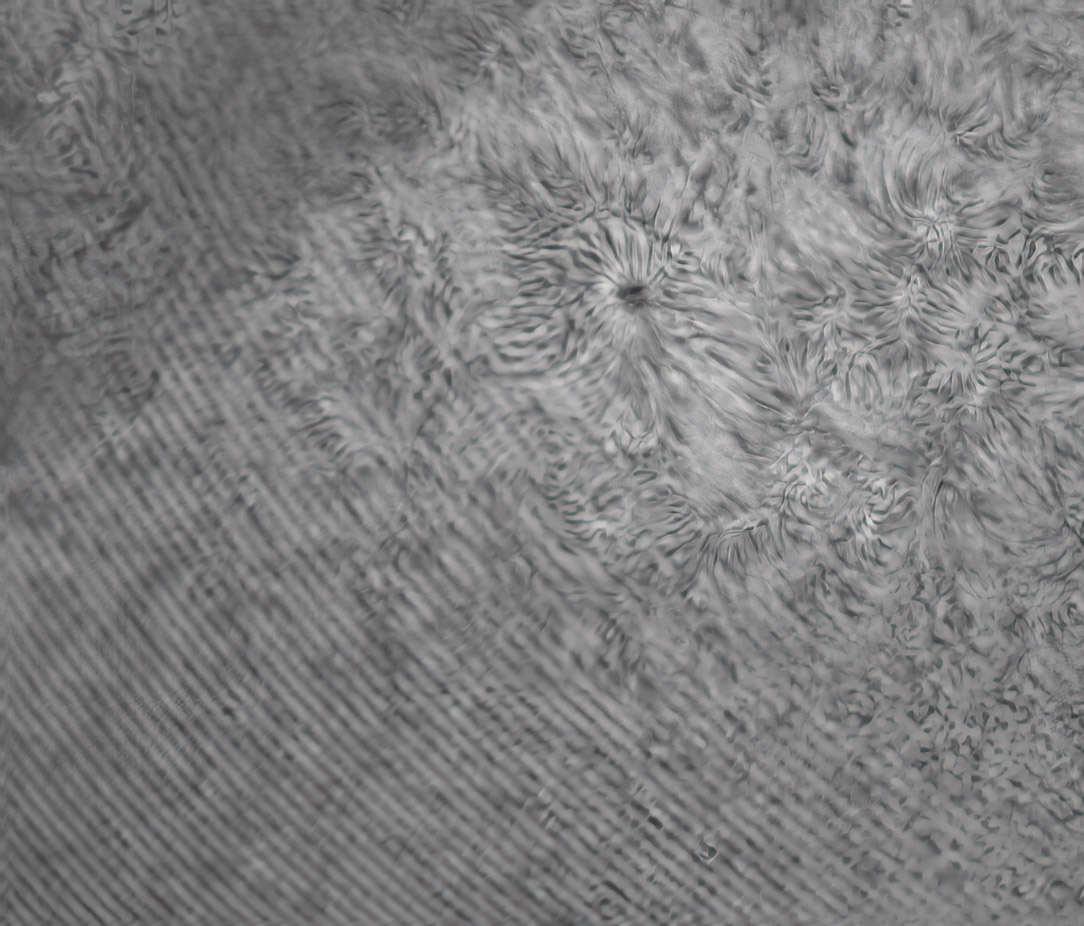
Today's Sun is not especially striking without the rings as seen with the old camera either, so let's just save the bandwidth. Here's a rimshot of a 15,000 mile high cowboy roping steers on the edge of the Sun just to prove it all still works.
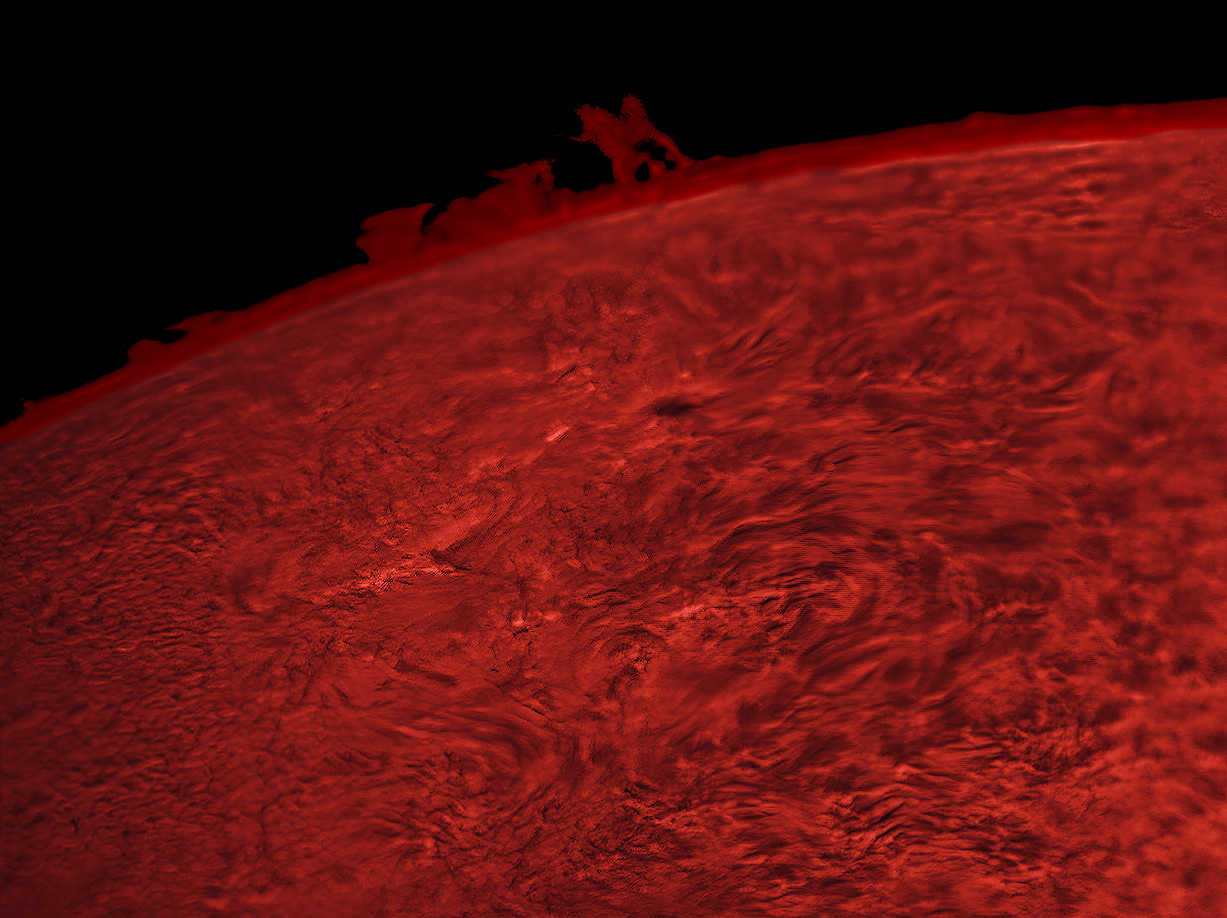
Best 50 of 100, 90mm Orion/Lunt Frankenscope
ASI120, 3ms, ASIStudio, Autostakkert3!, Topaz AI Sharpen
Today I set up over at the community lake access lot where I could image earlier in the day across a large, grass-covered field and the lake. Yes, that makes a difference! BTW, the railroad ties that border the east edge of the parking area are oriented 355 degrees true, so there's your casual polar alignment marker right there. Better alignment meant I could take longer video clips and that made a difference, too. Most of the images are on this larger than shown by default; you can do whatever "view image" keystrokes work for you to see them at larger scale.
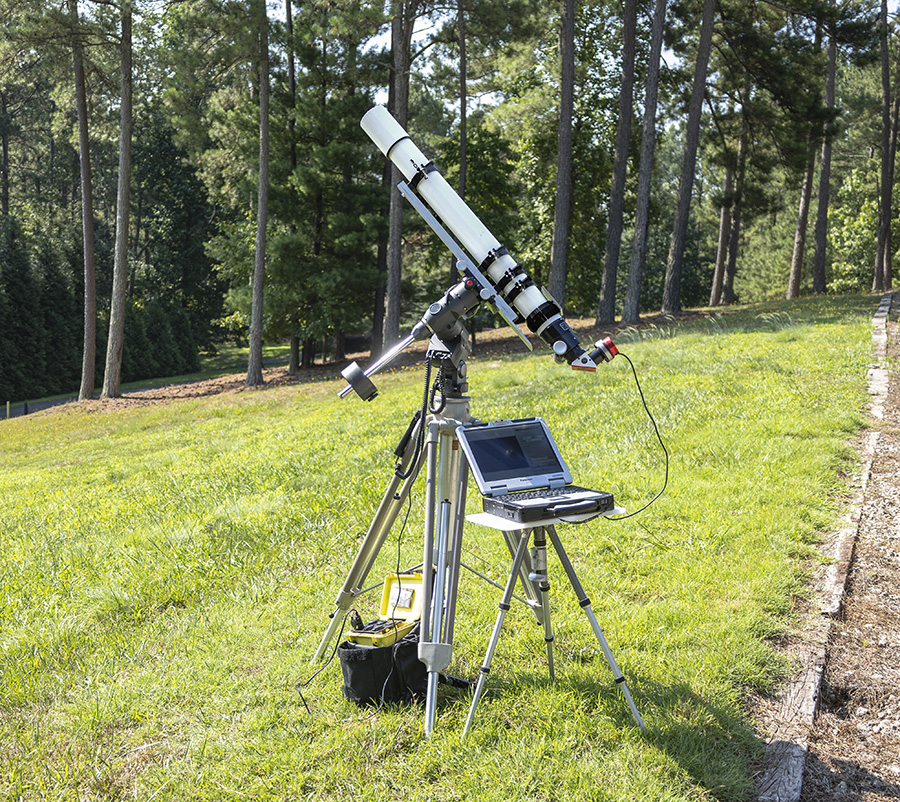
The current solar kit.
Since this and that have been moved, changed, messed with, I measured the image scale that this outfit now delivers: the Sun's image is 2860 pixels in diameter; it's apparent diameter is 31.25 arc minutes. 2860/(31.48*60) = So that's 1.514 pixels per arc second. Or
0.66 arc seconds per pixel. Since a pixel is 3.75 microns with this camera, that's 176 arc seconds per mm. So the focal length comes to 206265/176 or 1,172mm, or F13.0, which is very slightly short of the 1,277mm, F14.2, which is said to be ideal by (for example) this page:
http://www.wilmslowastro.com/software/formulae.htm#CCD_Sampling
where the claim is that 3x oversampling is ideal for high-resolution solar imaging. If I am thinking straight about the way "lucky imaging" works, then the optical resolution is the limiting factor, not my much worse seeing, because we rely on luck to capture data at instants of near-perfect seeing across parts of the image. According to the classic formula, my 90mm objective should have a Dawe's limit of about 1.27 arc seconds; by that standard, I am oversampling by a factor of 1.9 not 2.8 -- the difference is that the site cited above computers the limit based on the color of light being sampled. F14.1 works out as ideal in red light, but F19.4 in blue. So forget Dawe's Limit and trust the more detailed analysis (actually, didn't Dawe's specify green light anyway?). In any case, I am very close to the theoretical best image scale, but not at all sure I have in my head whether drizzling "should" help the data, given seeing and everything else. So, just try it and see.
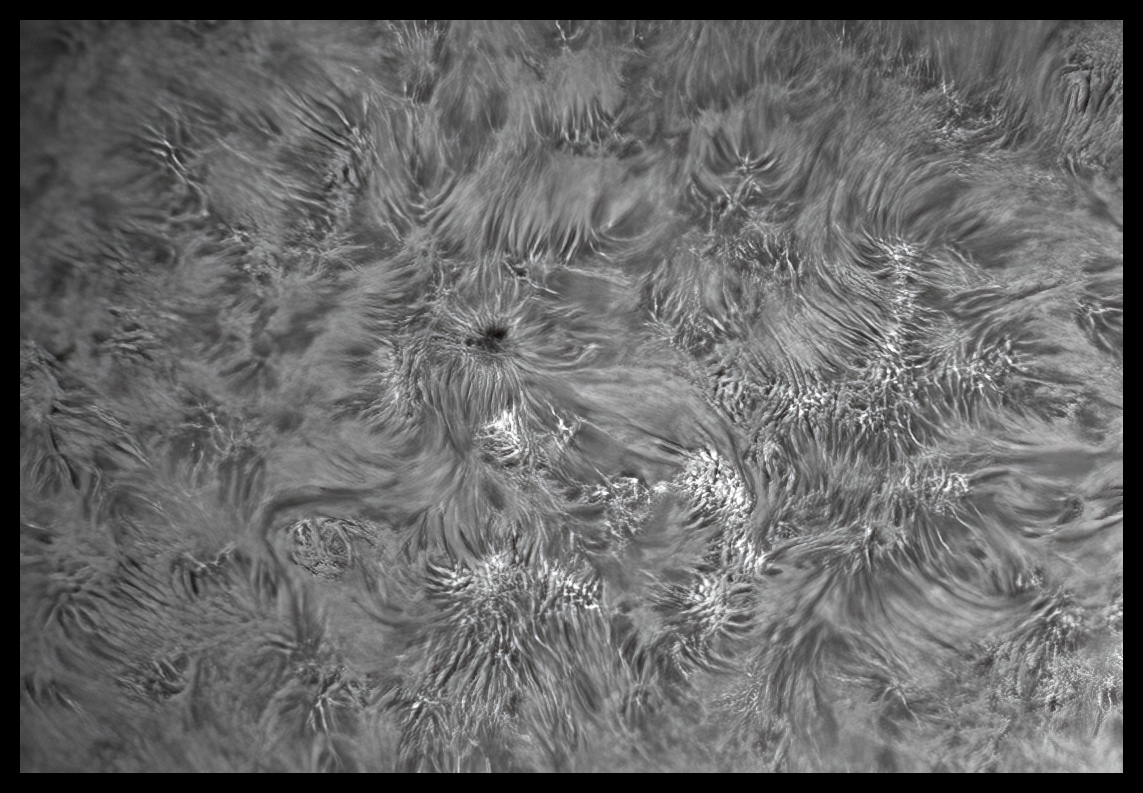
Best 100 of 1,000 frames. Captured in ASIStudio, stacked in AS!3,
polished in Photoshop with Topaz AI
I reworked this from the AVI with AS!3 including drizzle (1.5x) to see if I could
recover any data lost "between the pixels." Boy! Did that work! This time anyway.
Click here or on the image above to see it at full resolution.
And here's a look at some of the raw data on Vimeo.
Eh? Eh? Software's pretty good stuff eh?
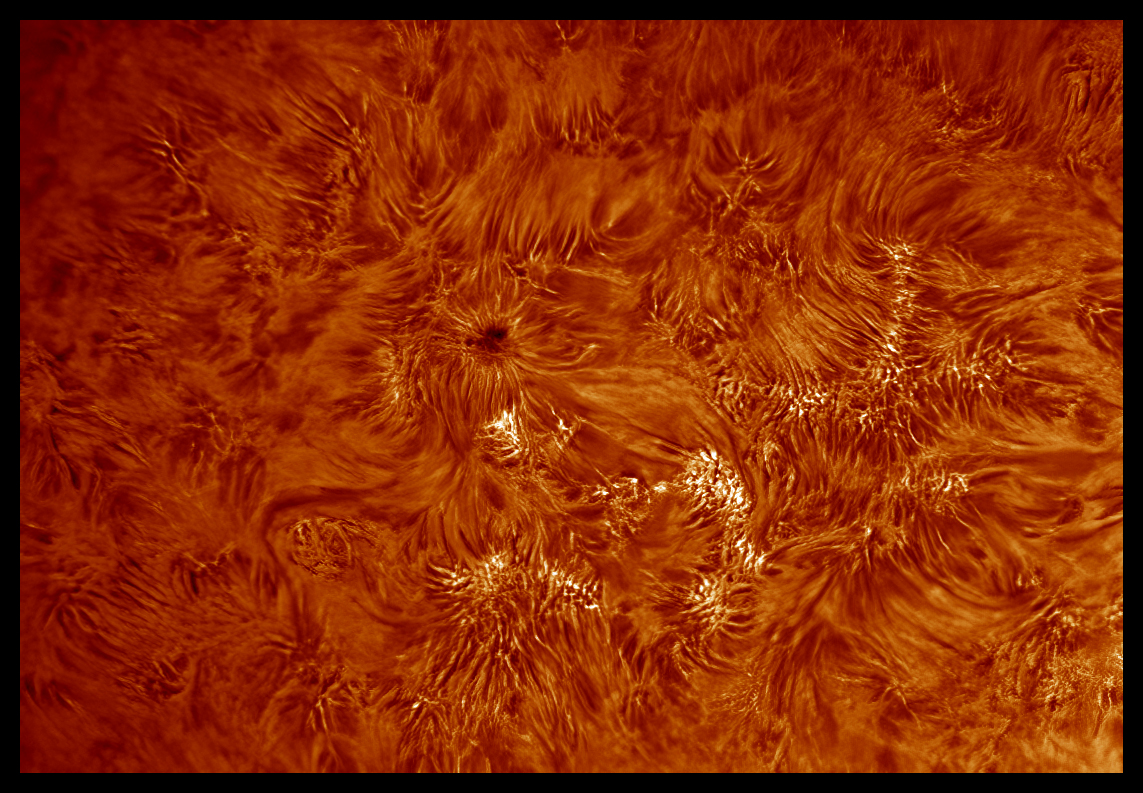
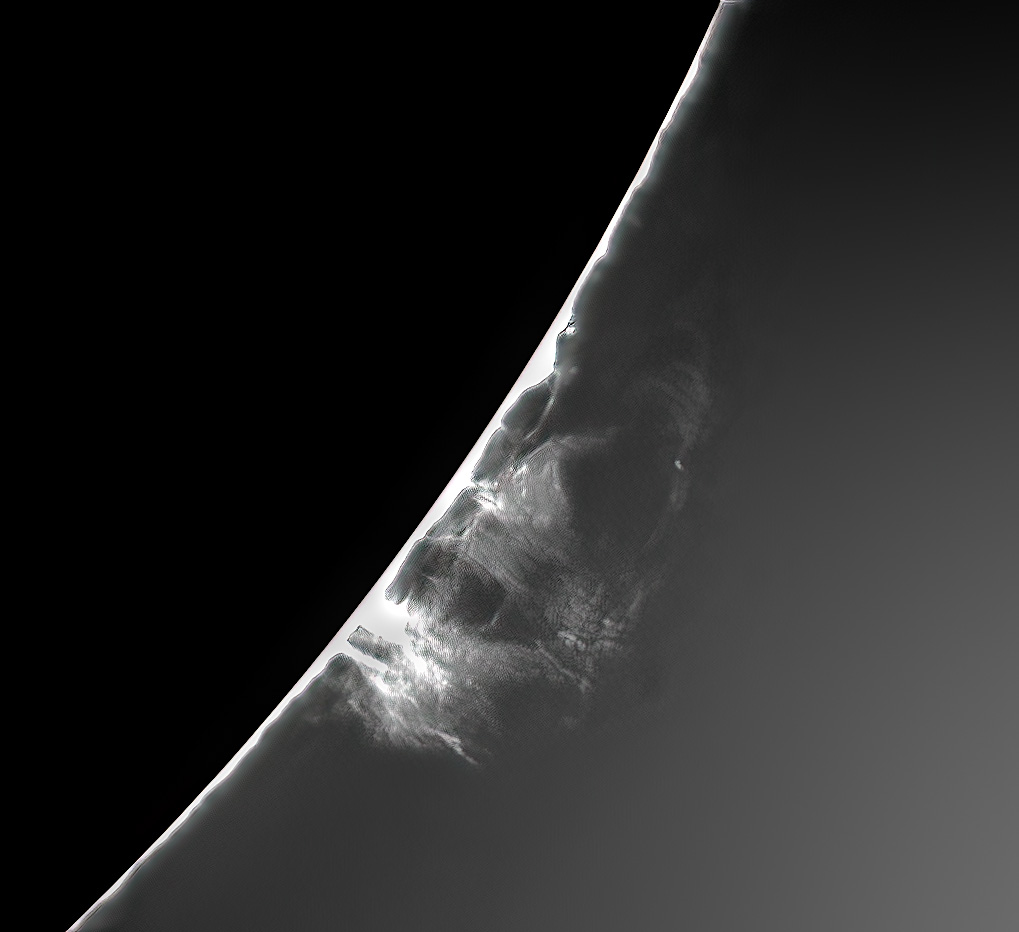
Increased exposure and gain. Best 50 of 250.